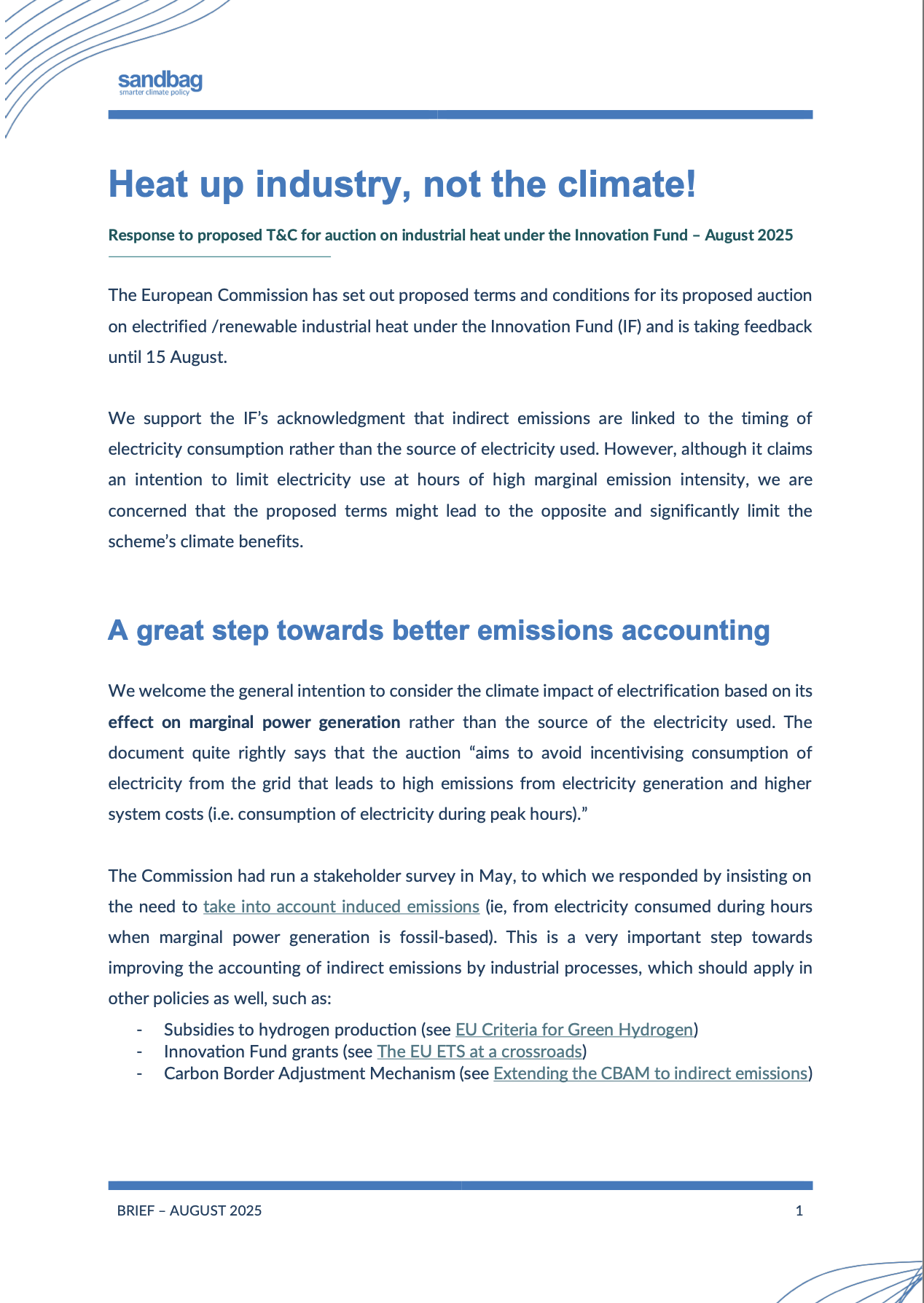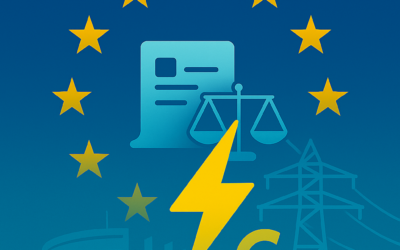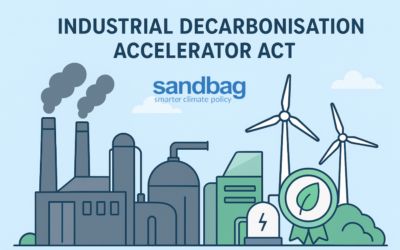The European Commission has set out proposed terms and conditions for its auction on electrified /renewable industrial heat under the Innovation Fund (IF). We support the IF’s acknowledgment that indirect emissions are linked to the timing of electricity consumption rather than the source of electricity used. However, although it claims an intention to limit electricity use at hours of high marginal emission intensity, we are concerned that the proposed terms might lead to the opposite and significantly limit the scheme’s climate benefits.

A great step towards better emissions accounting
We welcome the general intention to consider the climate impact of electrification based on its effect on marginal power generation rather than the source of the electricity used. The document quite rightly says that the auction “aims to avoid incentivising consumption of electricity from the grid that leads to high emissions from electricity generation and higher system costs (i.e. consumption of electricity during peak hours).”
The Commission had run a stakeholder survey in May, to which we responded by insisting on the need to take into account induced emissions (ie, from electricity consumed during hours when marginal power generation is fossil-based). This is a very important step towards improving the accounting of indirect emissions by industrial processes, which should apply in other policies as well, such as:
- Subsidies to hydrogen production (see EU Criteria for Green Hydrogen)
- Innovation Fund grants (see The EU ETS at a crossroads)
- Carbon Border Adjustment Mechanism (see Extending the CBAM to indirect emissions)
The proposed T&C therefore include an incentive to use electricity at non-peak time. This incentive consists of a limit to subsidy payments based on 80% of the equipment’s full load-hour (i.e. 24/7 operation), which could be lifted in two conditions (point 1.10 of the T&C):
Approach 1: At end of the monitoring period, the project can prove through audited statements that it is not consuming electricity in the 10% highest price hours.
Approach 2: The project proves its ability to apply flexibility (with appropriate investment if needed) at entry into operation.
Action should match intention
We are concerned that the mechanism contradicts the purpose.
- A piece of equipment that applies flexibility will, very likely, not run 24/7. Lifting the 80% limit on full-load hours (as allowed by Approach 2) is therefore an invitation to not apply such flexibility.
- A plant operator cannot know, in real time, whether or not the current electricity price will be in the 10% highest of the running monitoring period. In approach 1, flexibility would not guarantee the payment of subsidy.
- In some countries, excluding only 10% hours will still leave a lot of induced emissions, as we found in our report: Getting Electrification Right: The broader challenge of induced emissions. The percentage should better reflect different bidding zones.
- The ability to use flexibility does not guarantee that such flexibility will be used properly. Some power users might find better value in entering fixed-price, long term electricity contracts.
Another provision of the T&C even penalises the application of flexibility. Point 4.3 on “Sanctions in case of non-compliance with support requirements” stipulates that “the grant agreement may be terminated, or the grant reduced if the electrified/renewable heat production falls below 30% of the expected yearly average volume as stated in the bid for three consecutive years”.
It is clear that, in bidding zones with longer peak hours due to larger fossil electricity generation, reducing consumption by over 30% in some years might be the right thing to do. In those cases, the threat of terminating or reducing grants would have the exact opposite effect to encouraging flexibility.
Solution: better reward flexibility
Count induced emissions in the estimation of abatement
At the time of bidding, abatement should take into account not only the fuel replaced by the electrified process but also a projection of emissions induced by the electricity use of the equipment. This estimate should factor in the type of operation (with or without flexibility).
Expected abatement = reference abatement (expected) – induced emissions (expected)
At the end of each reporting period, grants should be paid based on the abatement achieved, in which the emissions induced by electricity use in peak hours counts negatively:
Achieved abatement = reference abatement (actual) – induced emissions (actual)
This should not add much complexity. The proposed T&C already require strict monitoring of heat produced, based on ISO certified energy management systems. Grant amounts are already adjustable based on actual heat produced (see 4.1 and 4.3).
Identify peak hours using a relevant price threshold
Peak hours, which allow to calculate induced emissions, should be identified by a fixed price threshold that is reflective of fossil marginal generation in the electricity grid. We propose to use the methodology used in Article 6 of the Delegated Act on Renewable Fuels from Non-Biological Origin: a threshold of €20 per MWh or 0.36 times the price of EU ETS emission allowances, for the day-ahead power price in the bidding zone of the project.
Extend, roll over
Grantees using flexibility might not receive as much subsidy as expected, in bidding zones and years with fewer non-peak hours than expected. In those cases, they should get their grants extended, not reduced or terminated, and the grant amounts rolled over to subsequent years.
Related publications
Electrification or electrical decarbonisation? We need both!
Sandbag’s response to the EU’s Electricity Action Plan highlights why both electrification and power sector decarbonisation are essential. It warns that growing electricity demand risks cannibalising clean power, unless renewable deployment accelerates.
Extending the CBAM to indirect emissions
Sandbag’s latest brief outlines why the CBAM must include indirect emissions — and how this would improve climate effectiveness, industrial fairness, and fiscal efficiency.
New Principles for Steel Labelling: response to the consultation on the Industrial Decarbonisation Accelerator Act
Sandbag’s response to the EU’s Industrial Decarbonisation Accelerator Act sets out four principles to guide green steel labelling schemes, promoting credible standards based on lifecycle emissions and system-wide decarbonisation.



